Narrator: “In 1980, the groundbreaking computer game Rogue was released. It was a fantasy adventure game where players navigated a procedurally generated dungeon trying to find the Amulet of Yendor. It also involved permadeath. No saved games. No checkpoints. You die; you start over. Welcome to Rogue!
Rogue was very influential; it spawned two new genres: Rogue-like and Rogue-lite. Rogue-likes stuck to Rogue’s initial design theory. Permadeath. No saves. Start over. Rouge-lites were made for those who wanted advancement in their gaming. In a Rogue-lite, when you die, some of your equipment/stats/currency are carried over to your next game. Examples of this are Hades, Binding of Isaac, and two games you might have heard of: Slay the Spire and Dead Cells.
Video games based board games are nothing new, so it was only a matter of time before designers would try to bring the rogue-lite experience to the analog world. The two most well-known computer/video games that are now also board games are Slay the Spire and Dead Cells. I have played both games. My review will focus on Dead Cells, but I will touch on Slay the Spire in my Final Thoughts. So, did I like Dead Cells, or should-“
*Cut to the Narrator, slumped over with a weapon in his back.
*Fade to black*
*Cut to a grainy film*
Narrator: “In 1980, the groundbreaking computer game Rogue….
Gameplay Overview:
Dead Cells is a cooperative rogue-lite board game that is a cardboard recreation of the popular video game. One to four players (best at two or three, with more on this later) will delve into a biome to attempt a run (see below). Game session length is impossible to define. You can perform as many runs as you desire, with each run lasting a variable amount of time, depending on how well you play or how quickly you die.
A single run consists of three steps:
- Step 1 – Move: Move one space on the Biome board, following pathing and other rules that are unique to each biome
- Step 2 – Flip and Reveal: Each space has its own tile. When you move to a new space, flip and resolve the tile, from gaining treasure to fighting monsters
- Step 3 – Dead or Alive? if someone in the party died, the run ends. If not, repeat steps 1-3 again.
Runs are a single playthrough that ends when you either die or beat a boss. Neither of those results actually ends the game. If you die, you get to (potentially) purchase improvements (see below) and then try another run. If you beat a boss, the game will provide the next steps. If you beat all of the bosses, you can always reset the game and start over.
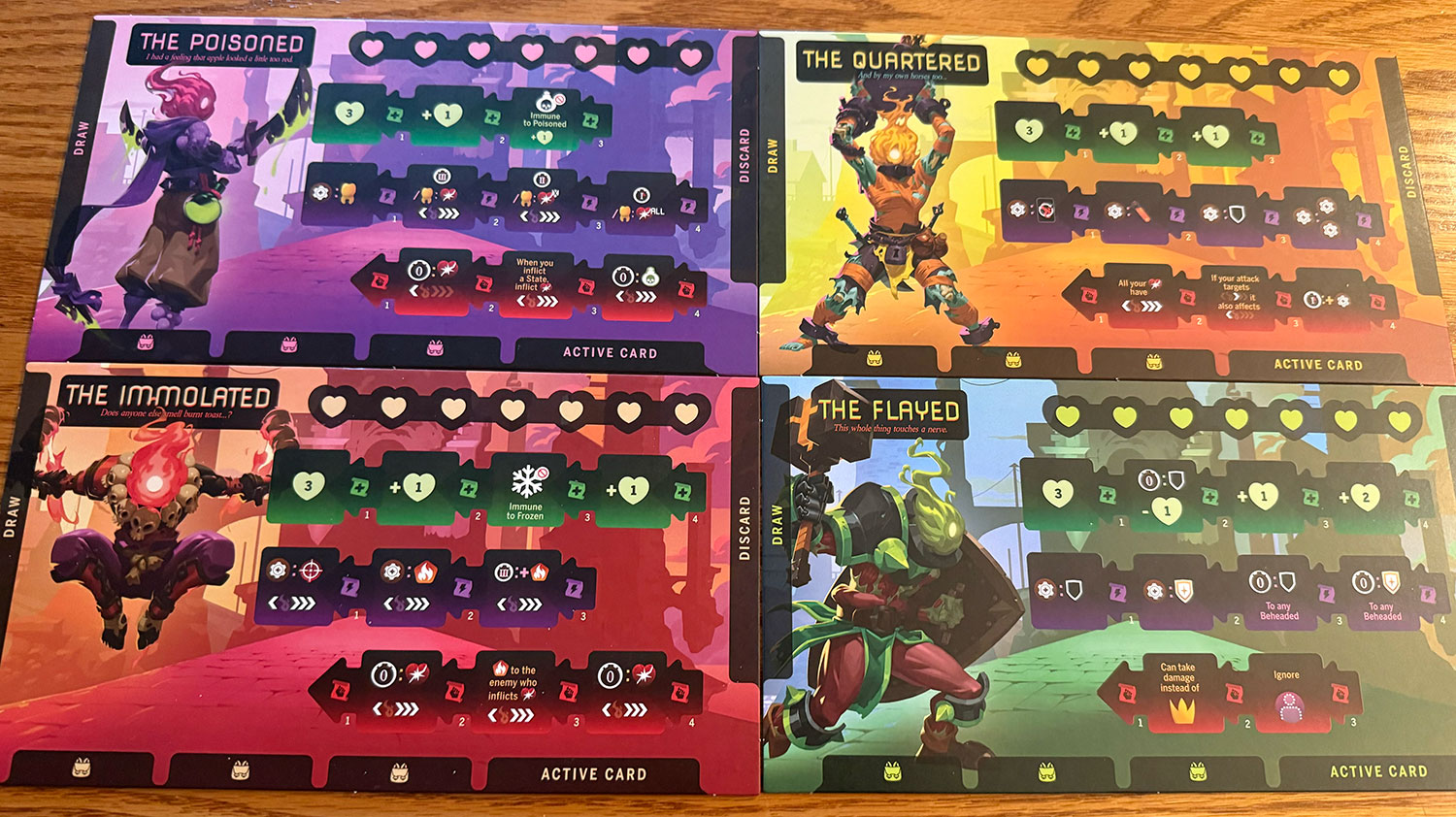
Game Experience:
What made me wish I had multiple lives to live to improve myself:
Note: This review will be a spoiler-free as possible. The pics may be boring, but I did not want to give any of the surprises away.
Dead Cell’s best design decisions involved replicating the rouge-lite experience. You will die and die often, but you will (usually) earn advancements. You will earn cells to unlock upgrade cards, or to toss down a well for… reasons. There are 119 upgrade cards and 21 well cards. Additionally, there are 67 equipment cards that, upon being earned, become a permanent addition to your arsenal for all future runs. And that only covers your permanent advancements.
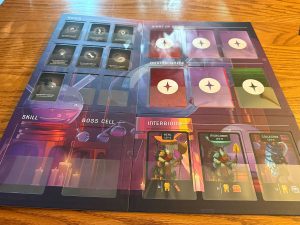
You will also earn temporary advancements during your run, such as upgrading your three abilities, Survival, Tactics, and Brutality. Side note: for even more replay value, each of the four Beheaded (characters) have different skills on their three skill tracks. Dying is usually not fun, but in Dead Cells, it was sometimes the most anticipated part of the game as everyone was excited to see what upgrade(s) we unlocked. You will then start your next run, better as a team. Eventually, you will advance to the next biome (of the seven included in the game), and the process will repeat.
Finally, as you get further into the game, you can unlock Runes. This is the Metroidvania portion of the game, where previous paths that were inaccessible become available due to the Runes you earned. As you can see, there are significant advancement opportunities that are managed just like in the digital rogue-lite games.
The game also has a quick pace. Resolving non-encounter tiles is easy. Simply flip and follow the icons. Encounter tiles involve combat, and yet are still relatively easy to resolve, especially after you master the game’s iconography. When you reveal an encounter tile, it tells you how many monsters to draw, as well as if they are elite or normal. The cards drawn will show the monster’s abilities, what they do, and in which phase(s) of the combat they will trigger. Players then discuss briefly, without providing specifics, which actions they can do and in which round.
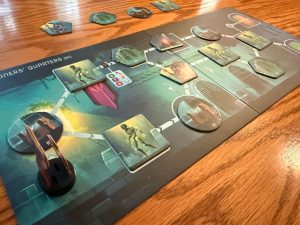
After the group reveals three combat cards (three combat cards are used in all player counts), the phases are resolved from phase 0 (before combat actions) through phase 4 (generally an additional monster action if it is still alive). I had a blast trying to solve these combat puzzles. Should you play your best card this combat, or do you think the rest of your team can manage it? There is loot you want to pick up. Should you play a card with a loot icon to make sure you get the rewards, even though the rest of the card is not helpful?
In addition, I found some gaming groups like being more descriptive, while others followed the RAW (rules as written). My opinion: do what is most fun for your group. It’s not like Dead Cells will be reporting you to the Board Game Paladins for cheating. Finally, the game is a breeze to teach. Combat is the most complicated portion of the game. Well, that and explaining how dying isn’t necessarily bad and, in fact, is beneficial. Most of my games with new players were understood by the second combat, with only confirmation of icons needed after that.
Finally, the setup, tear-down, and game-saving procedures for Dead Cell were well thought out. All earned unlocks are saved on the Mutation Board. The board has plastic in every card slot to hold the cards in place. When you are done playing, simply fold the board up, and your cards are held in place. The insert was built to store components by biome, so everything you need is within easy reach. There are also compartments to save your cards between sessions. Dying isn’t as big of a deal if it only takes you 5 minutes to start your next game!
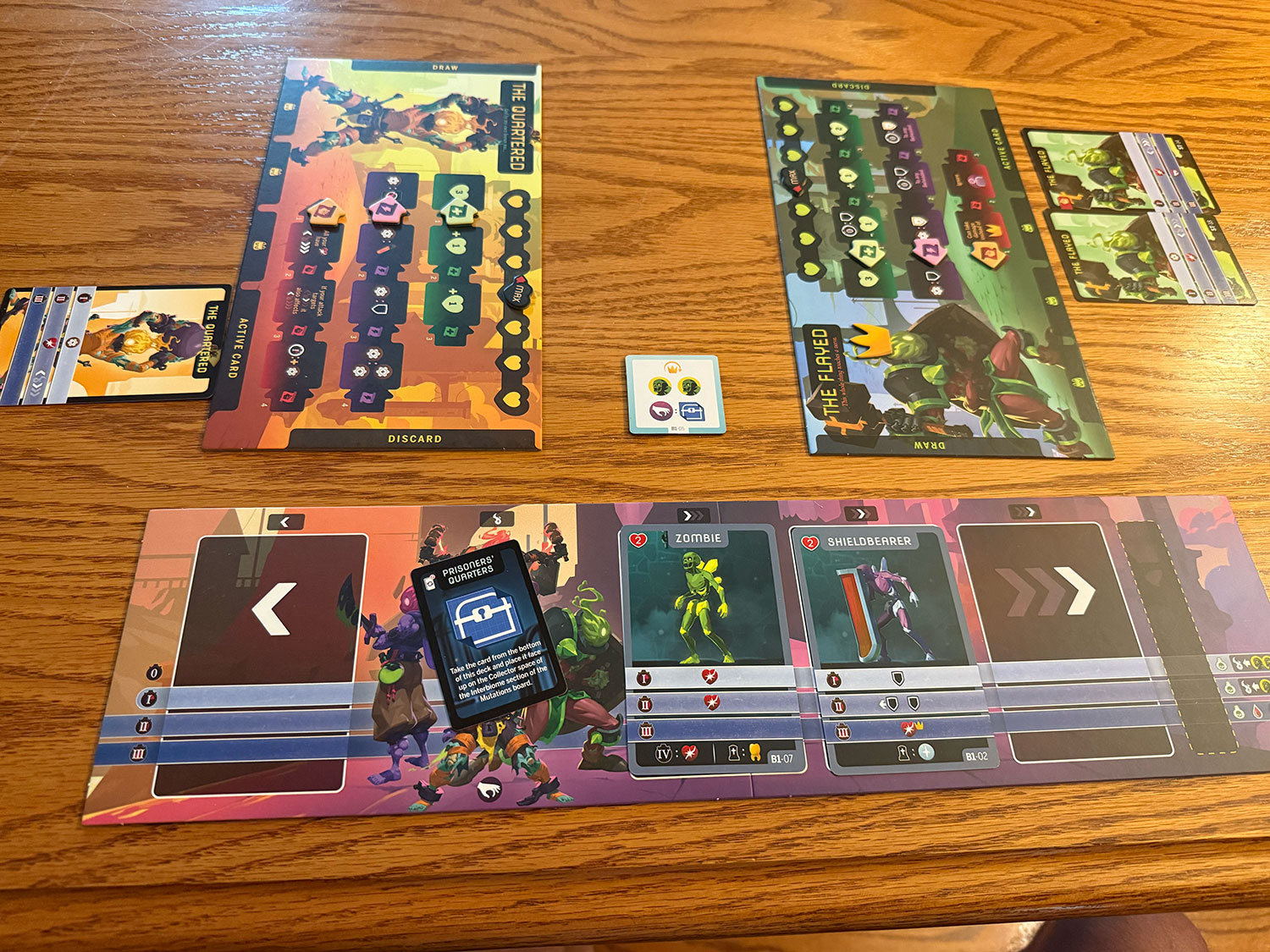
What made me wish I was playing Slay the Spire:
I had two issues with Dead Cells. My biggest complaint is the player count. For me, I would not play Dead Cells solo. Why? I would prefer to play the video game if I am playing solo. What makes Dead Cells a great board game is experiencing Dead Cells cooperatively with one or two other players. Wait Brian. I SWORE you said it plays four. It does; however, the fourth player is considered the passing player and does not play a combat card, as only three combat cards are played per round. They do get a free level up if they draw a card with the right symbol, and they can redraw cards to their hand as well.
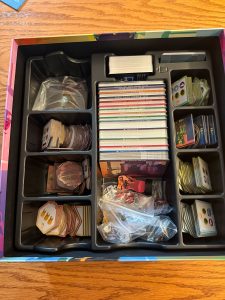
While there is interaction between all four players (they can discuss who should and should not participate in the combat, except the First Player, who CANNOT pass), it feels a little bit like running the app while everyone else plays Alchemists. I am not sure how the designers could have better incorporated a fourth player unless you radically changed the base game design. It feels more like they did not want to have the cover art state “for one to three players” because, understandably, a four-player game would sell better.
My second issue, and it pertains to all rogue-lite experiences, be it digital or analog, is fruitless runs. Again, there is not much the designers could do to “fix” this issue, as it happens in almost all rogue-lites. You have a run where you draw bad cards, or you spawn an enemy you cannot defeat. In Dead Cells, when you die, the only items you retain are Equipment cards and cells, which can be spent on upgrades. What if you did not earn any new cells or Equipment? You just gained nothing. Some would view this as a “waste of time.” Unfortunately, that is part of the rogue-lite design. You will not gain upgrades every run. You must take the good with the bad. It’s just more painful in the board game format, where you have to reset all of the components.
Final Thoughts:
I really enjoyed Dead Cells. It is easy to get to the table, there are SOOO many unlocks, and while it can get a bit repetitive, it plays fast and provides rewards at the right pace that I found myself saying “just one more game.” Playing Dead Cells is truly playing a rogue-like board game.
Now, for my comparison to Slay the Spire, the other rogue-lite game that was published around the same time as Dead Cells.
I did enjoy Save the Spire, but I do not prefer one over the other. They scratch two different itches for me. I KNOW that this sounds like a copout, but here is how I view these two games. First, I would not play either of them solo, as I would just play the video game. I want to experience coop with both games, which is not available in the digital versions. Of the two games, Slay the Spire is the involved game. It has more crunch. There is more player cooperation. That being said, it has its downsides. It’s more expensive. It is MUCH longer to play a run. Its unlocking progress is MUCH slower, and there is nowhere near as much content to unlock.
I will play Slay the Spire when I want to play a more involved and interactive deckbuilding game that is light on the unlocks.
I will play Dead Cells when I want to play a faster game, or if I want to spend my evening playing a true rogue-lite and unlocking a ton of advancements!
All of that being said, if the pain of fruitless runs would be greater for you than the joy of upgrading, which will happen more often than fruitless runs, then not just Dead Cells, but rogue-lites in general, may not be for you. If this does not bother you, or if this review has piqued your interest in the game, I would highly recommend Dead Cells. It is a fantastic analog rogue-lite!
Final Score: 4 Stars – The most faithful rogue-lite experience in cardboard
 Hits:
Hits:
• Rogue-lite done right
• Plays fast and easy to teach
• Set up/tear down/save state
Misses:
• Best at two or three players
• Fruitless runs











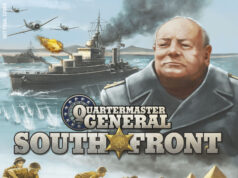










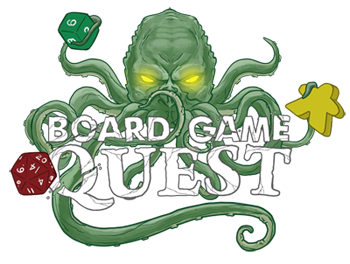
Great! This game is so interesting. I really want to play this game with friends.